
The Piano Concerto in A minor, Op. 54, by the German Romantic composer Robert Schumann was completed in 1845 and is the composer's only piano concerto. The complete work was premiered in Dresden on 4 December 1845. It is one of the most widely performed and recorded piano concertos from the Romantic period.

A piano concerto, a type of concerto, is a solo composition in the classical music genre which is composed for piano accompanied by an orchestra or other large ensemble. Piano concertos are typically virtuosic showpieces which require an advanced level of technique. Piano concertos are typically written out in music notation, including sheet music for the pianist, orchestral parts, and a full score for the conductor.

Felix Mendelssohn's Violin Concerto in E minor, Op. 64, MWV O 14, is his last concerto. Well received at its premiere, it has remained among the most prominent and highly-regarded violin concertos. It holds a central place in the violin repertoire and has developed a reputation as an essential concerto for all aspiring concert violinists to master, and usually one of the first Romantic era concertos they learn. A typical performance lasts just under half an hour.
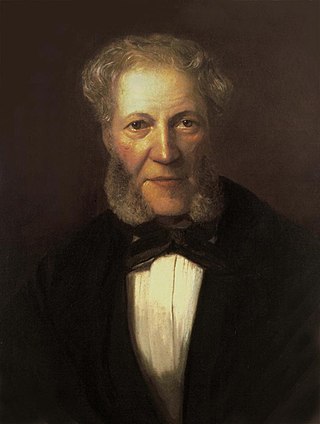
Isaac Ignaz Moscheles was a Bohemian piano virtuoso and composer. He was based initially in London and later at Leipzig, where he joined his friend and sometime pupil Felix Mendelssohn as professor of piano in the Conservatory.
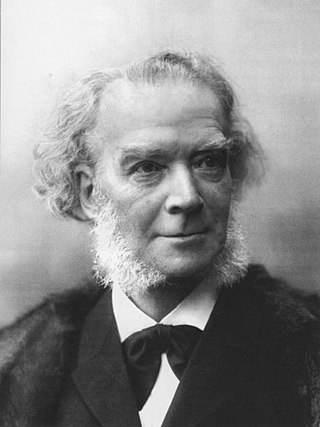
Carl Heinrich Carsten Reinecke was a German composer, conductor, and pianist in the mid-Romantic era.

Mendelssohn's Piano Concerto No. 1 in G minor, Op. 25, was written in 1830–31, around the same time as his fourth symphony ("Italian"), and premiered in Munich on 17 October 1831. This concerto was composed in Rome during a travel in Italy after the composer met the pianist Delphine von Schauroth in Munich. The concerto was dedicated to her. Mendelssohn attended one party after another in Munich in October 1831, the month of the premiere, but he also played chamber music and taught double counterpoint. He performed the piece himself at the premiere, which also included performances of his Symphony No. 1 and the Overture from Midsummer Night's Dream. He had already written a piano concerto in A minor with string accompaniment (1822) and two concertos with two pianos (1823–24).

Ferdinand (von) Hiller was a German composer, conductor, pianist, writer and music director.

The String Octet in E-flat major, Op. 20, MWV R 20, was written by the 16-year-old Felix Mendelssohn during the fall of 1825 and completed on October 15. Written for four violins, two violas, and two cellos, this work created a new chamber music genre. Conrad Wilson summarizes much of its reception ever since: "Its youthful verve, brilliance and perfection make it one of the miracles of nineteenth-century music." This was one of the first works of Mendelssohn to be very well received.
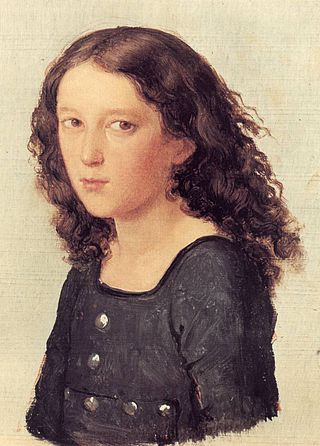
The Concerto for Violin and String Orchestra in D minor, MWV O 3, was composed by Felix Mendelssohn at the age of thirteen. It has three movements, Allegro–Andante–Allegro, and performance duration is approximately 22 minutes.
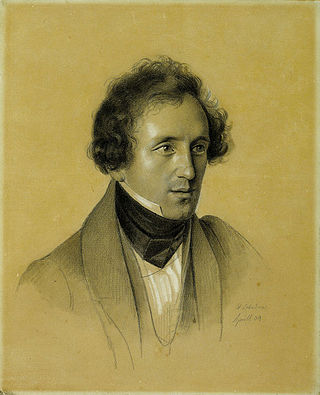
The Piano Concerto No. 2 in D minor, Op. 40, was written in 1837 by Felix Mendelssohn and premiered at the Birmingham Festival on 21 September that year, an event that also saw the premiere of Mendelssohn's oratorio St. Paul. He had already written a piano concerto in A minor with string accompaniment (1822), two concertos with two pianos (1823–4), and his first Piano Concerto. The concerto is about 25 minutes in length, and is scored for solo piano, 2 flutes, 2 oboes, 2 clarinets, 2 bassoons, 2 horns, 2 trumpets, timpani, and strings.
The Violin Sonata in F minor, Op. 4, MWV Q 12 for violin and piano was composed by Felix Mendelssohn in 1823 and is the only one to carry an opus number. Mendelssohn composed two other violin sonatas, both in F major, that were not published in his lifetime. This was published with a dedication to his friend and violin teacher, Eduard Rietz, who was also dedicatee of the composer's Octet in E-flat major, Op. 20.
Felix Mendelssohn's Sextet in D major, Op. 110, MWV Q 16, for piano, violin, two violas, cello, and double bass was composed in April–May 1824, when Mendelssohn was only 15, the same time he was working on a comic opera Die Hochzeit des Camacho. Its composition took place between the Viola Sonata and the Piano Quartet No. 3. It also preceded the famous Octet, Op. 20 by about a year. 1824 is also the probable year of the composition of the Clarinet Sonata. Like the latter, the Sextet was not published during the composer's lifetime. Its first edition was issued in 1868 as a part of a complete collection of Mendelssohn's works, hence the misleadingly high opus number.
Felix Mendelssohn's Piano Quartet No. 2 in F minor, Op. 2, for piano, violin, viola and cello was published in 1823, a year after his first Piano Quartet No. 1 in C minor, Op. 1. This work was dedicated to Carl Friedrich Zelter, who became Mendelssohn's composition and music tutor starting at the age of eight years old. Zelter would take Mendelssohn on trips to go see Johann Wolfgang von Goethe, who was also an important figure in Mendelssohn's life when it came to the composition of his earliest pieces between the years 1821-1825. Mendelssohn's three piano quartets were the first piano quartets he composed and published. He composed the second quartet at the age of only 14 years.

The Concerto for Two Pianos and Orchestra in A♭ major was written by Felix Mendelssohn when he was 15 years old, and is dated 12 November 1824. Written for two pianos and a full orchestra, the work received its first public performance in Berlin, in 1825. The composer and his mentor Ignaz Moscheles, who inspired its composition, were the soloists. He performed it again on 20 February 1827 at Stettin, where the cathedral organist, composer, baritone singer and conductor Carl Loewe organised concerts. Loewe and Mendelssohn were the two piano soloists on that occasion.
The Violin Concerto in A major, P. 49, is the first violin concerto by the Italian composer Ottorino Respighi, which he abandoned in 1903. In 2009, Salvatore Di Vittorio completed it.

The Concerto for Piano, Violin, and Strings in D minor, MWV O4, also known as the Double Concerto in D minor, was written in 1823 by Felix Mendelssohn when he was 14 years old. This piece is Mendelssohn's fourth work for a solo instrument with orchestral accompaniment, preceded by a Largo and Allegro in D minor for Piano and Strings MWV O1, the Piano Concerto in A Minor MWV O2, and the Violin Concerto in D minor MWV O3. Mendelssohn composed the work to be performed for a private concert on May 25, 1823 at the Mendelssohn home in Berlin with his violin teacher and friend, Eduard Rietz. Following this private performance, Mendelssohn revised the scoring, adding winds and timpani and is possibly the first work in which Mendelssohn used winds and timpani in a large work. A public performance was given on July 3, 1823 at the Berlin Schauspielhaus. Like the A minor piano concerto (1822), it remained unpublished during Mendelssohn's lifetime and it wasn't until 1999 when a critical edition of the piece was available.
A concert piece is a musical composition, in most cases in one movement, intended for performance in a concert. Usually it is written for one or more virtuoso instrumental soloists and orchestral or piano accompaniment.
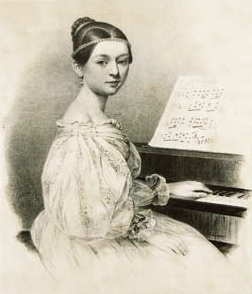
The Piano Concerto in A minor, Op. 7, was composed by Clara Wieck, better known as Clara Schumann after her later marriage to Robert Schumann. She completed her only finished piano concerto in 1835, and played it first that year with the Leipzig Gewandhaus Orchestra, conducted by Felix Mendelssohn.

The Piano Concerto Op. 1 in F-sharp minor is a concerto for piano and orchestra written by Norbert Burgmüller in the years 1828–1829. It premiered on 14 January in 1830 and was performed by Burgmüller himself at the piano.















